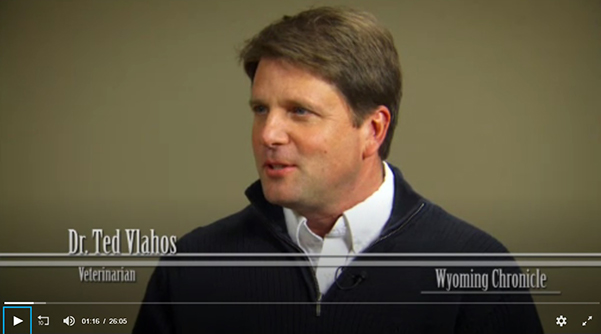When a horse suffers from catastrophic limb failure or a debilitating injury, a viable alternative to euthanasia is amputation and prosthesis. Dr. Ted Vlahos is widely regarded as a world leader and pioneer in the development of this life-saving option. Dr. Ted Vlahos has been published extensively in peer-reviewed journals and advises veterinary teaching hospital surgeons across the globe. Although the need for removal of the equine limb is uncommon, horses can be expected to live a very comfortable life as a breeding or companion animal.
To determine if a horse is a good candidate for amputation and prosthesis, we consider several factors. First, we need to have an owner that is committed to the long-term care of the horse. Once the horse is in a permanent prosthesis, the daily maintenance is minimal in terms of time and expense; however, the equine amputee requires a lifetime commitment from its owner. The horse must be able to be handled on a very frequent basis; in other words, the feral broodmare or bucking horse is unlikely to fit into this category. It is also important that the opposite limb is in reasonably good health. A horse with support limb laminitis that has resulted in severe rotation is less than ideal. We have, however, performed several amputations on horses with mild support limb laminitis only to have that laminitis resolve once the painful limb has been removed. Once we determine that a horse is a good candidate for amputation and prosthesis, we have a lengthy discussion with the owners, caretakers, local prosthetist and their veterinarian. The long-term success of these cases is incredibly rewarding, and a team approach is essential.
Dr. Ted Vlahos performs surgery across the globe, so it is possible that he can do the procedure at your closest equine surgical facility. It is, however, our preference that we perform the procedure in our Cody, Wyoming hospital so that Dr. Ted Vlahos can be directly involved in the day-to-day postoperative care. We have performed surgery in our hospital on horses from every corner of the United States. Special transportation considerations are made on a case-by-case basis.
Once the horse arrives at our hospital, we allow a few days of rest (if possible) before surgery. A complete physical examination and radiographic study is performed, in addition to baseline blood tests. Amputation surgery has become quite routine in our practice. One significant difference that we have in the horse versus a human amputee is the requirement that the horse bear weight on the limb immediately after surgery. In all lower limb cases (from the fetlock and below), we place the horse in a transfixation cast. This involves the placement of 2 large threaded stainless-steel pins in the cannon bone, which are then cut and incorporated into a cast. This allows the weight of the horse to be transferred through the pins to the cast and then to the ground, all without loading the stump. We will place the horse under a short anesthesia approximately 2-3 weeks after surgery to evaluate the stump. Approximately 2 weeks later, we remove the pins and allow the horse to fully load the healed stump. During this immediate period after surgery, we place a temporary prosthetic over the cast as it is curing. This is simply a metal cup welded to three or four straps extending up the horse’s leg. This allows the horse to freely turn and pivot while the pins are in place which minimizes stress at the bone-pin interface. If we perform the procedure at the mid cannon bone, a transfixation cast is not usually possible. In those cases, we simply maintain the horse in a cast with a temporary prosthesis until the stump is healed.
Once the stump has healed and the pins are removed, we then allow a couple of weeks before we begin the process of constructing the prosthesis. Fortunately, the horse has minimal soft tissue in the lower limb, so remodeling of the leg occurs quickly. We have extensive experience working with Hanger Clinic, one of the nation’s largest prosthetic makers. The process of making a prosthetic for a horse is the same as for humans; however, due to the size of most horses, the hinge and shock absorber-type of designs that are commonly used in humans are not strong enough to withstand the weight of the horse. Thus, we are left with a post and footplate design; these have served us very well for the past 2 decades.
The process of making the prosthesis is very easy. With the horse under another short anesthesia, the cast is removed. We then make a light mold of the limb with a couple of rolls of cast tape, and then remove it after a few minutes. A regular cast with the temporary prosthetic is again placed and the horse is recovered from anesthesia. The mold of the leg is shipped to the prosthetist, where they pour a plaster of Paris positive mold of the horse. They then fabricate a hard test socket, which is a bivalve device. They send us the test socket, and we again place the horse under quick anesthesia, remove the cast, be sure the test socket fits, and you guessed it-replace the cast and temporary prosthetic. Once we give the okay that the test socket is a good fit, the prosthetist will make the permanent prosthesis. This usually takes 1-2 weeks. We have our welding shop make a stainless-steel foot plate with plenty of borium to provide grip for the horse. The prosthetics are either made of graphite laminate, or hard plastic. The graphite is slightly more expensive but lasts much longer. All prosthetics have a titanium post (pylon), and the stainless-steel foot plate. The final cast is removed with the horse standing under light sedation, and the permanent prosthesis is applied.
The prosthesis is a bivalve design with a comfortable padded liner. It is perforated with air holes to keep the limb cool. The horse wears a standard human prosthetic sock, and the prosthetic is secured with straps. Factors such as sweating, behavior and the horse’s environment will determine the frequency that the prosthesis is changed. Initially, we recommend changing the prosthesis daily; after a few weeks less frequent changes (every 2-3 days) are typical. Occasionally straps and liners need to be replaced; the typical prosthesis lasts 1-3 years.
What can you expect from the equine amputee?
The horse will be able to be turned out full time with very few restrictions. We discourage environments with steep slopes or deep water or muddy crossings. Mares are easily able to stand for live cover breeding and raise healthy foals; stallions can easily mount and dismount mares.
How much does the procedure cost?
Once we have a chance to evaluate the case, we can provide a detailed estimate. The surgery itself is generally much like a colic surgery (ranging $8-10k). The length of aftercare (as determined largely by time required for stump healing) will range $150-200 per day for 6-8 weeks. The prosthesis is additional, typically in the $2500-3000 range.
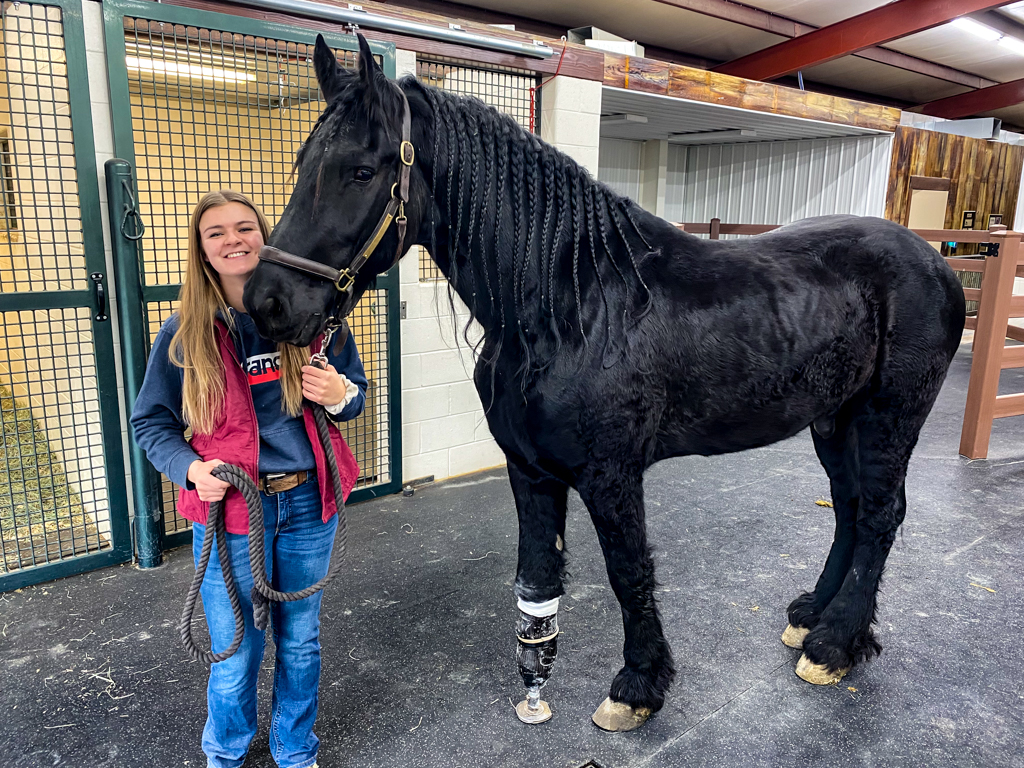
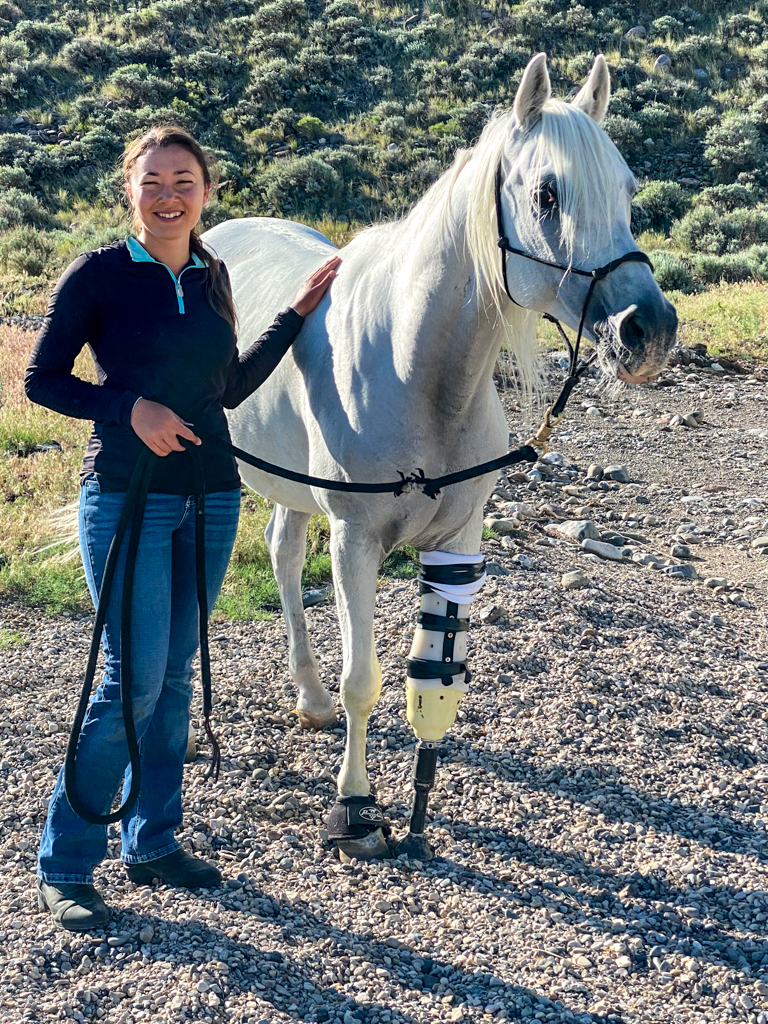
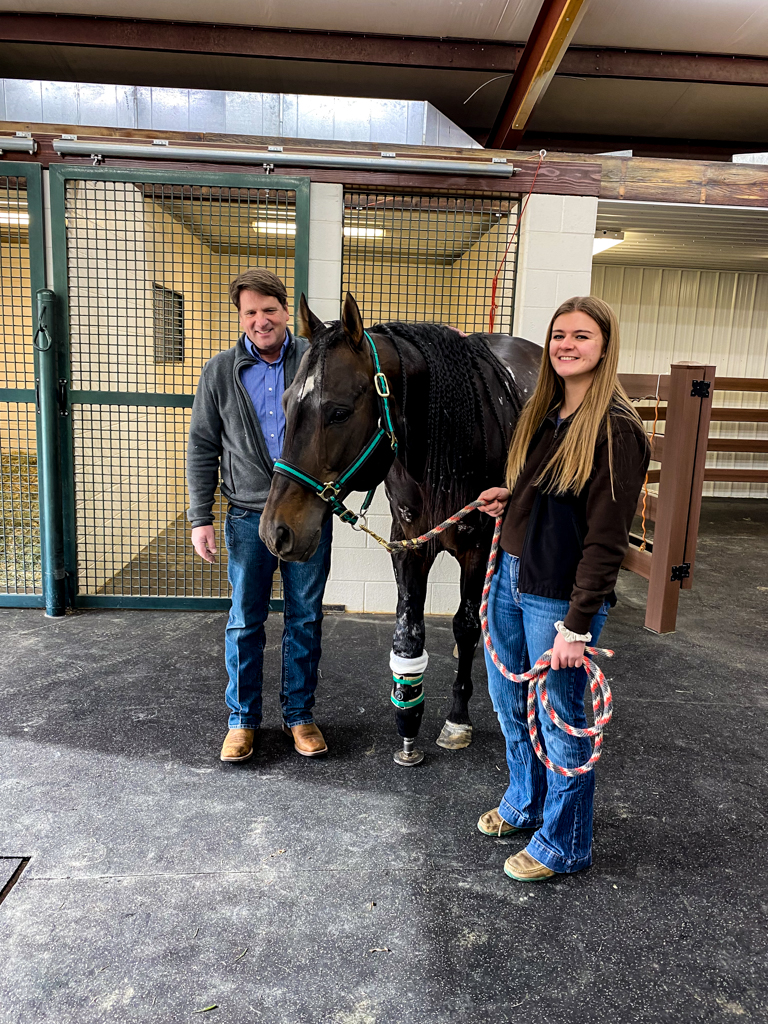
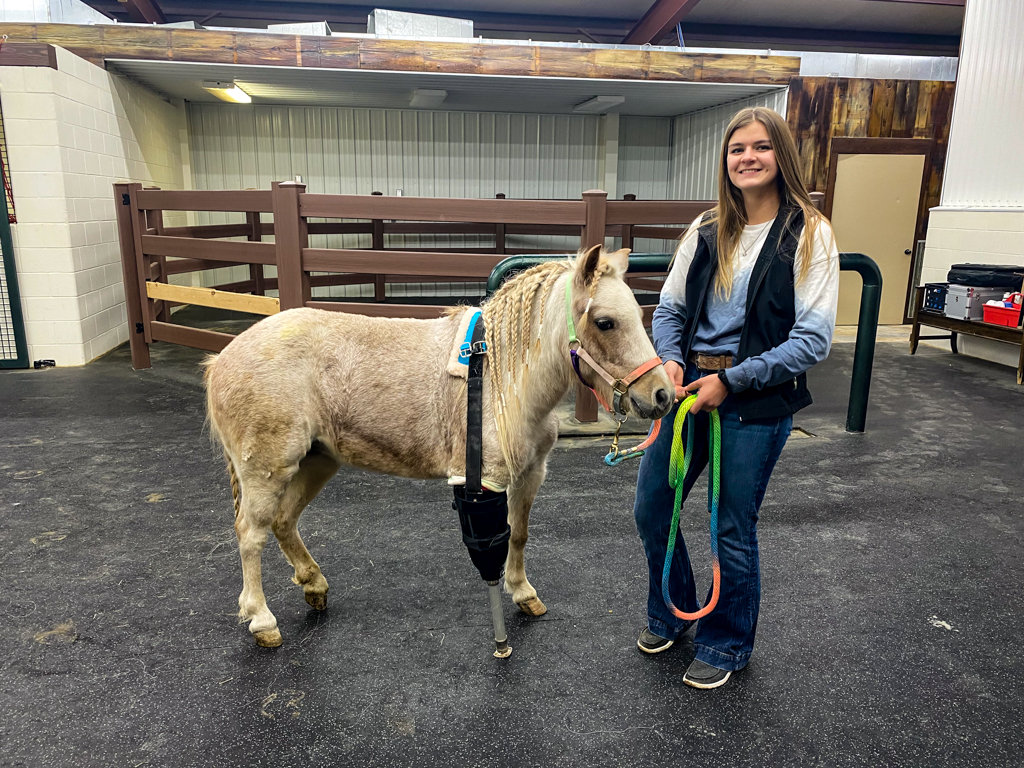
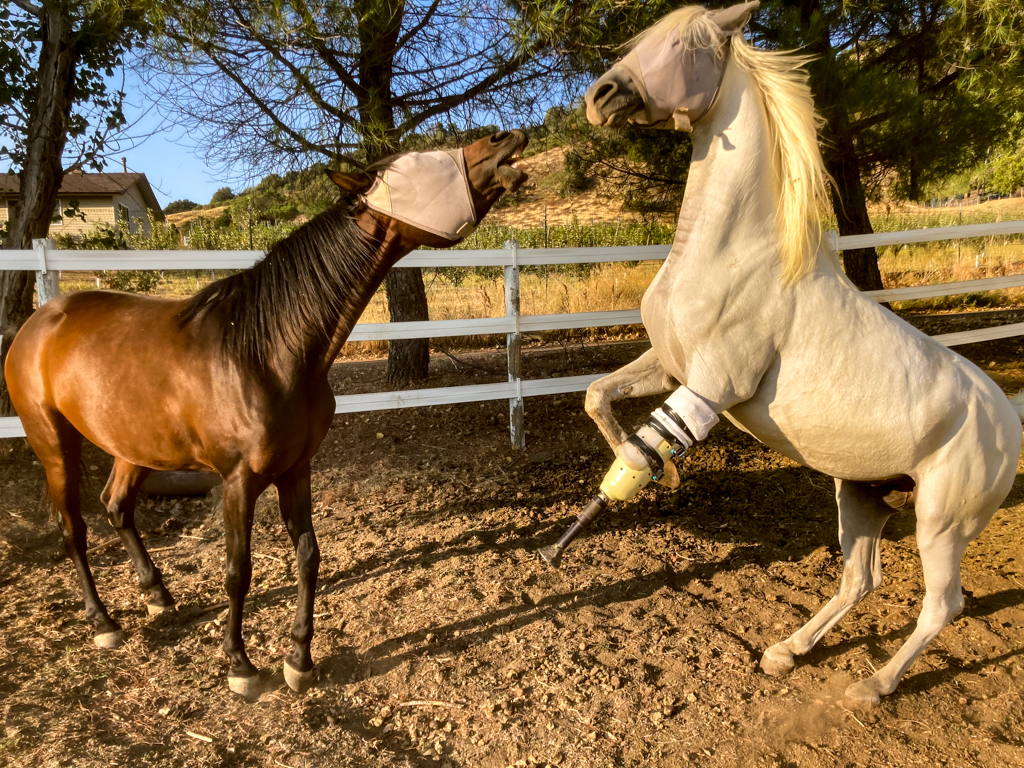
Arthrodesis Procedures
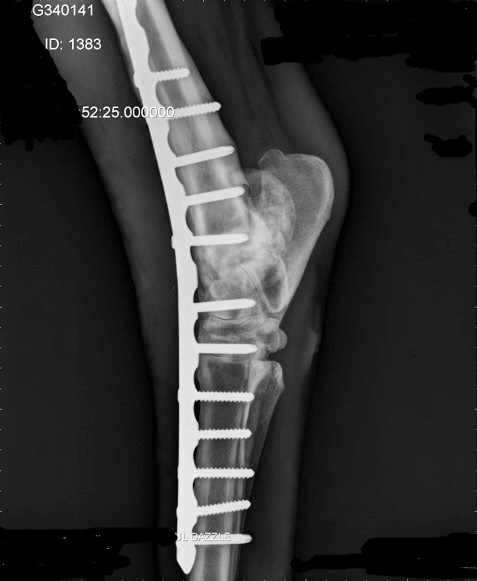
As much as we wish joint replacement surgery was available to the horse, it is not. However, there are many instances where surgery to remove a severely injured or diseased joint is performed. Horses undergo a procedure of surgical fusion, or arthrodesis, to remove an end-stage joint. Depending on the affected area, horses may return to full performance (pastern or distal hock joints) or enjoy a comfortable life of breeding or light riding. Dr. Ted Vlahos pioneered the procedure for complete hock fusion, pantarsal arthrodesis.
Gallery

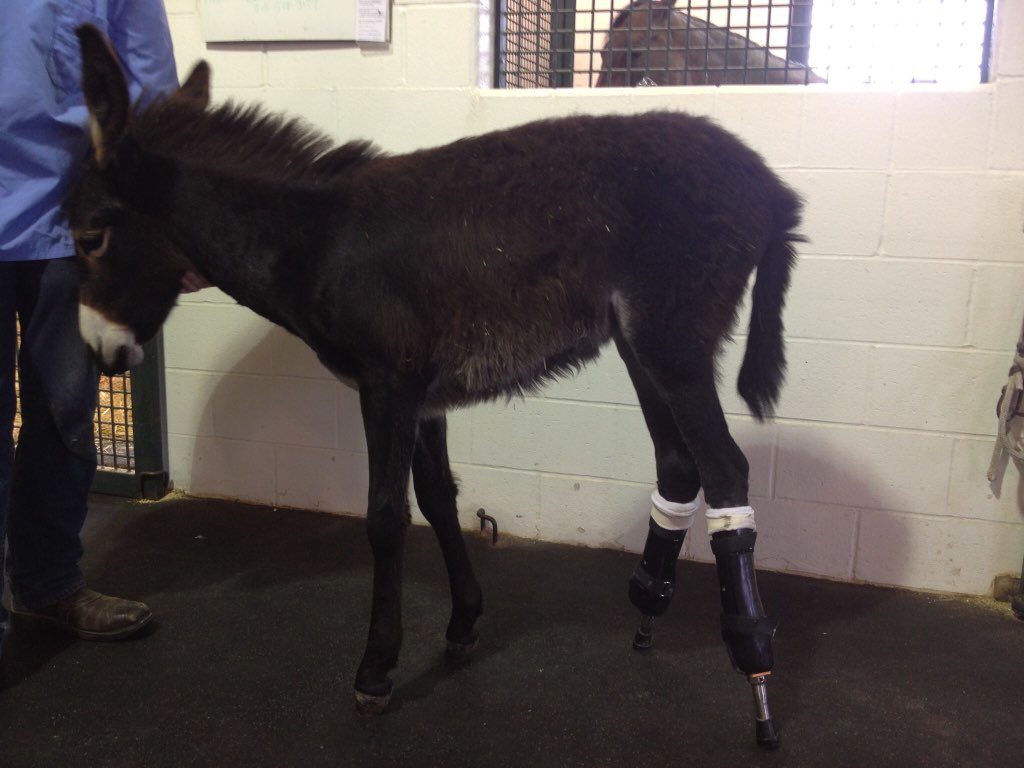




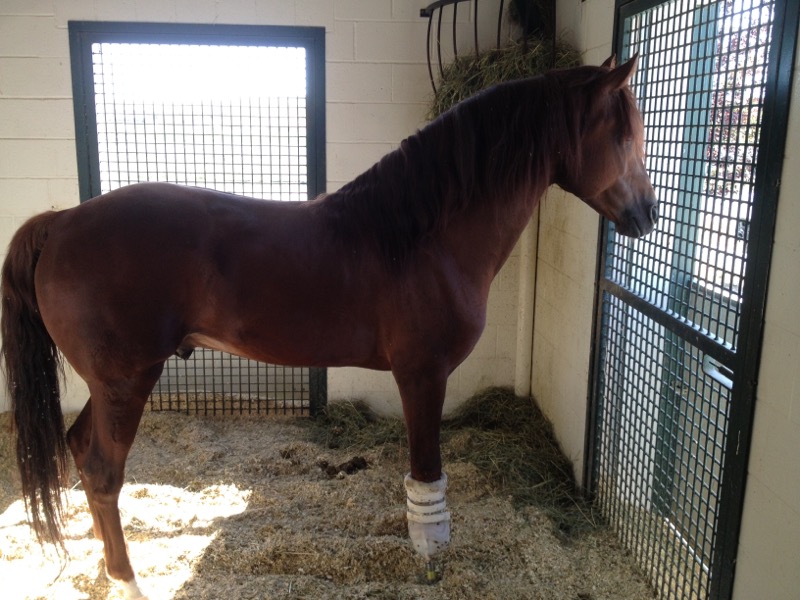

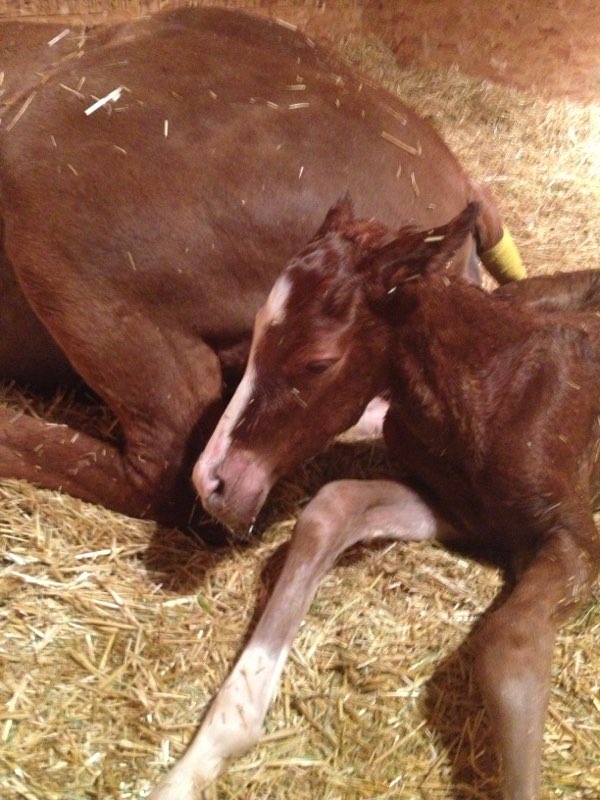

We look forward to answering any questions about this life-saving option!
Wyoming Chronicles PBS Documentary
